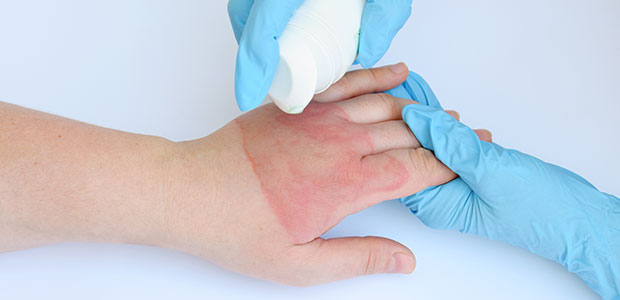
This Week is Burn Awareness Week
The first week of February (2-8) is Burn Awareness Week, observed by the American Burn Association. Educate yourself on burn, fire, and life safety and help prevent harmful or fatal burns.
A Burn Prevention poster contest, fact sheets, and the 2020 Campaign for Burn Awareness kicked off this first week of February through the American Burn Association (ABA). February 2 through 8 is National Burn Awareness Week (NBAW), and the ABA wants to help people, workers, and workplaces prevent burns from contact, frostbite and hypothermia, and non-fire cooking.
The World Health Organization (WHO) estimates that about 180,000 deaths every year are caused by burns around the world. In the United States specifically, 2008 saw 410,000 burn injuries—and 40,000 of those required hospitalization.
The ABA provides a number of ways you can observe NBAW including:
- Secure a local/state proclamation
- Create social Media posts
- Conduct a press conference
- Conduct a special event
- Recognize a special survivor
- Get creative—host a reunion or celebrate members of the burn care team
The ABA’s webpage also provides three fact sheets on how to avoid specific, common burns:
- Avoid a Contact Burn: Be cautious around hot objects, supervise children, turn off heating pads before sleep, and be careful taking items out of the microwave. According to the National Electronic Injury Surveillance System, roughly 70,000 people went to the ER because of contact burns in 2018.
- Frostbite and Hypothermia: Pay attention to weather forecasts, avoid outdoor activities when the temperature goes below 5 degrees Fahrenheit, and cover your ears and hands and feet with appropriate clothing. On average, about 1,300 deaths per year is associated with cold exposure. Signs of hypothermia include slurred speech, shivering, weakness, confusion, drowsiness and/or loss of consciousness.
- Non-Fire Cooking Burns: Keep hot foods away from table and counter edges, ask kids to stand back from hot food or items, and never hold a child when you’re cooking. Burns associated with cooking often happens with ovens and contact with hot objects or liquids.
Burns from the pavement, hair appliances, and fireplaces are other common burns in addition to contact burns, frostbite, hypothermia, and non-fire cooking burns. As the WHO reports, most burns happen in the home and in the workplace—so it’s important nearly every person be aware of fire and burn safety.
Just remember the catchy slogans for the 2020 winners of the Burn Prevention poster contest: